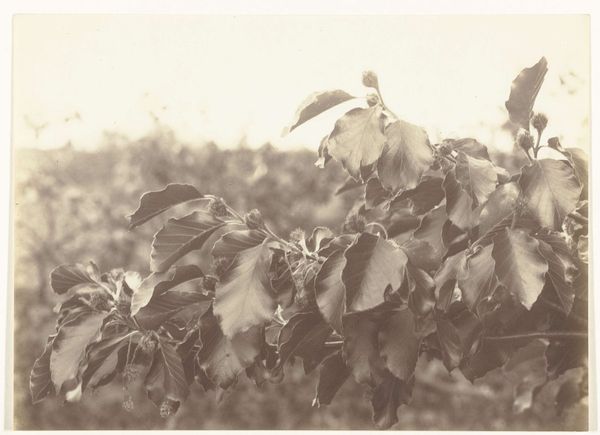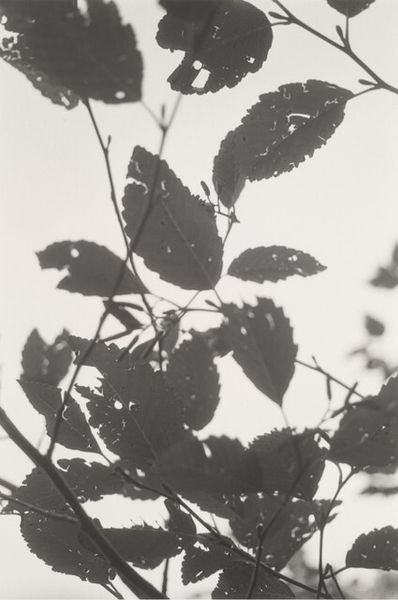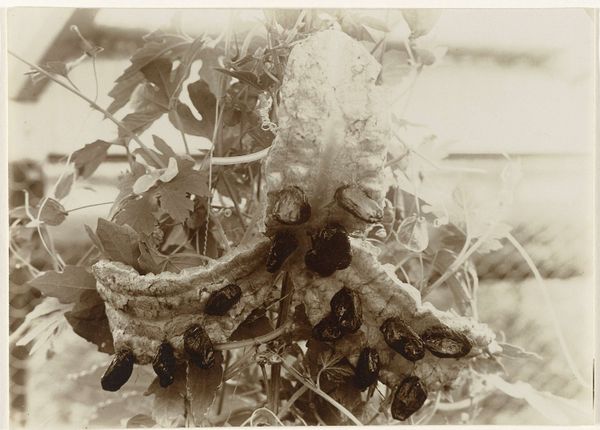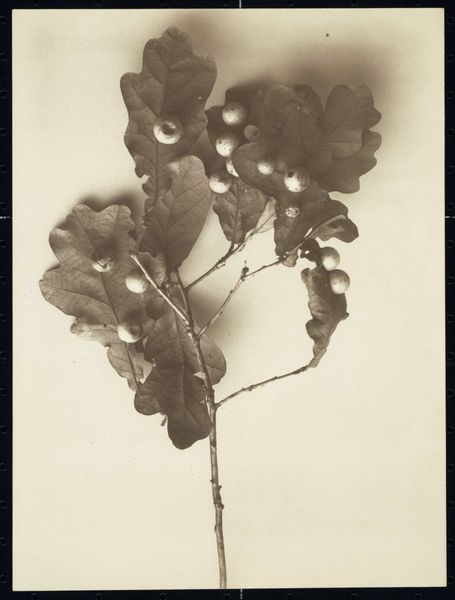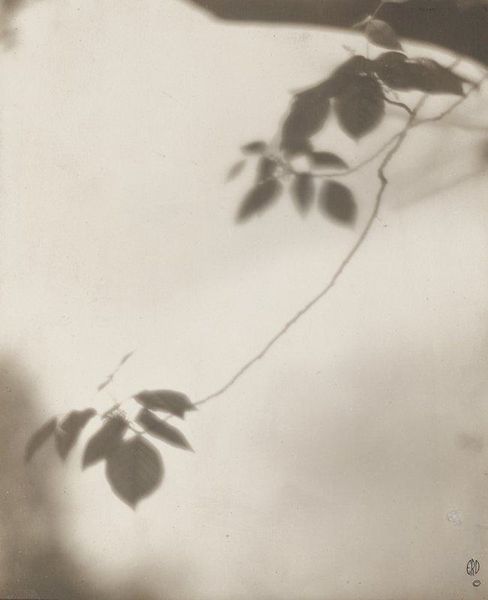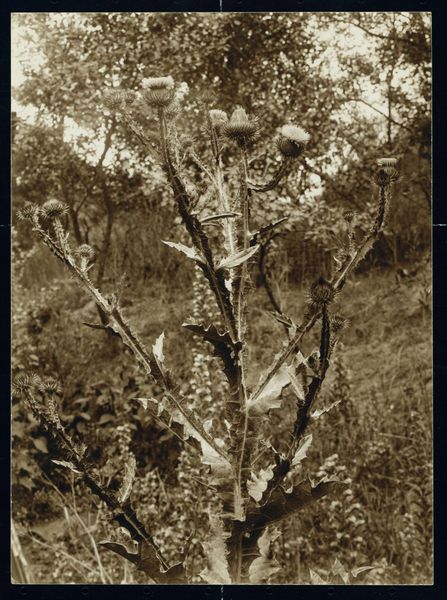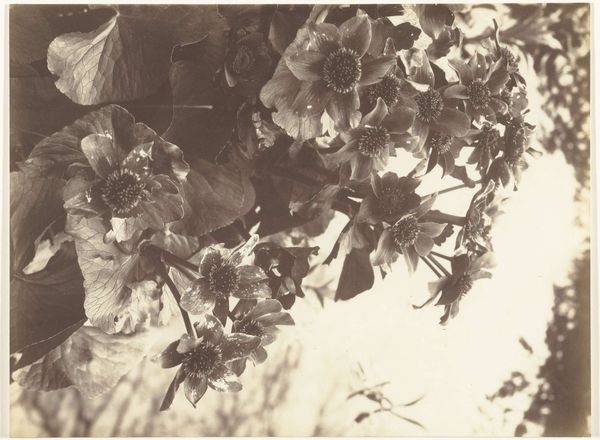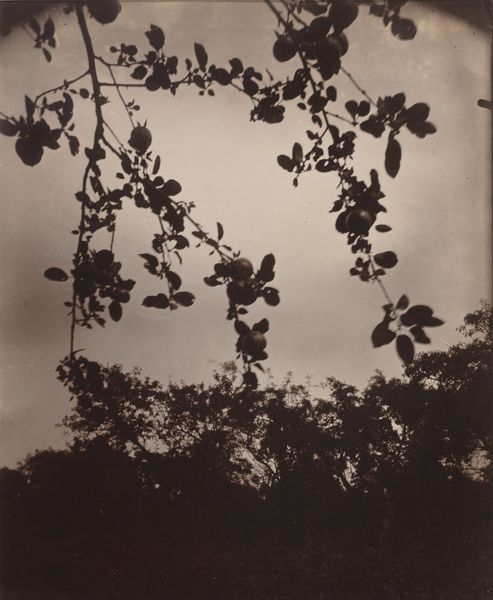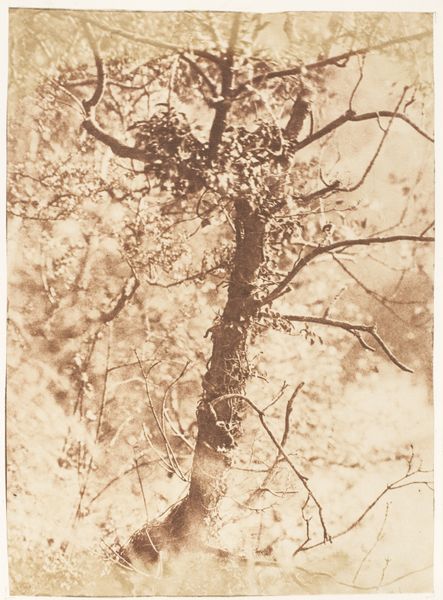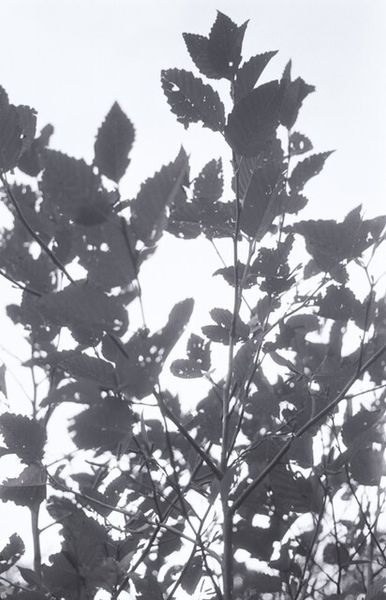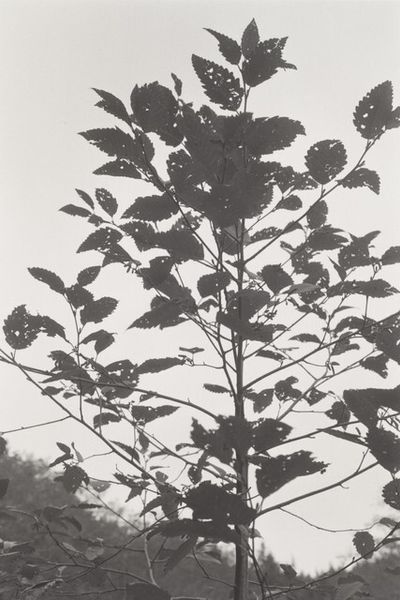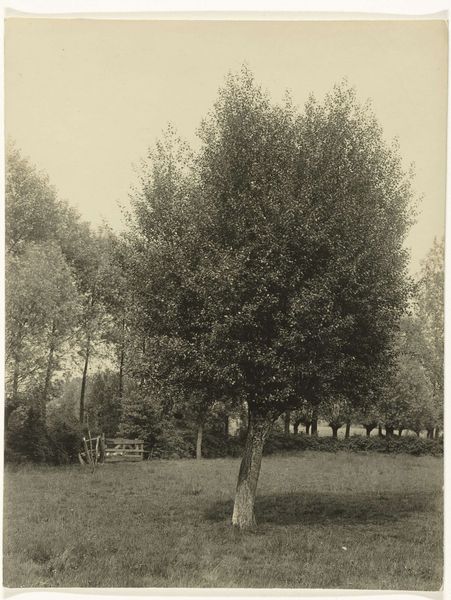
print, photography
#
negative space
#
mother nature
#
pictorialism
# print
#
landscape
#
photography
Dimensions: height 180 mm, width 130 mm
Copyright: Rijks Museum: Open Domain
Curator: This print, entitled "Zonnebloem" – meaning "Sunflower" – is credited to Laurens Lodewijk Kleijn and was likely made sometime between 1865 and 1900. It showcases Kleijn’s interest in the pictorialist style. Editor: It’s remarkably ghostly. The high contrast, the almost total absence of mid-tones, makes the sunflowers appear to float in this vaguely ominous, etherial space. Curator: Precisely. The technique aligns with pictorialism, which favored artistic effect over purely representational accuracy. Kleijn clearly manipulates the photographic process to evoke a particular mood and aesthetic, not just to document reality. We see an incredible example of that in the almost dream-like state he portrays ‘mother nature.’ Editor: I see the active construction of a symbolic ‘mother nature’ as a response to late 19th-century industrialization. Gardens and natural spaces were sites of resistance to urban alienation. To render it as photograph is already participating in the artifice of what nature means. Curator: That makes me think of the politics of imagery back then; landscape photography was being mobilized to promote certain visions of national identity and colonial expansion. This sunflower, in that context, could also symbolize a longing for the agrarian past amidst rapid modernization. It also promotes ideals tied to femininity. Editor: Considering the colonial aspect as a male-dominated position, would you agree Kleijn intentionally is promoting an agrarian past where the labour is performed primarily by women? And simultaneously placing flowers as subordinate? Curator: Perhaps, and that makes me consider whether the negative space in this work enhances a sense of vulnerability and of the subject. But let’s not forget about the medium; the print itself as an object also holds significance. Editor: True, the materiality reflects the values and resources allocated to art at this moment in time. The use of print suggests reproducibility and accessibility but contrast against the dark exposure in negative space could speak to censorship or class constraints regarding public imagery at the time. Curator: This artwork demonstrates the layers of meaning one image can have, and the value in deconstructing an image using the right tools, whether in relation to gender or political history. Editor: Ultimately, through deconstruction, it makes one wonder if there are constraints around what the camera can perceive regarding the subjects.
Comments
No comments
Be the first to comment and join the conversation on the ultimate creative platform.

